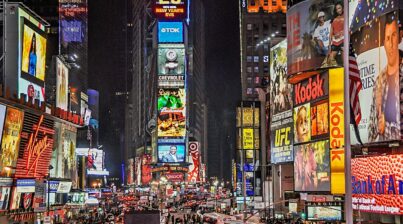Introduction
The world of online advertising is constantly evolving, with new technologies and consumer behaviors driving innovation at an unprecedented pace. In this article, we explore the latest emerging trends that are reshaping the advertising landscape, offering marketers new opportunities to connect with their audience in more personalized and engaging ways.
Augmented Reality (AR) in Advertising
Augmented reality (AR) is transforming online advertising by creating immersive experiences that allow consumers to interact with products in a virtual space. Brands are leveraging AR to enhance online shopping, provide virtual try-ons, and offer interactive ad experiences that engage users far beyond traditional advertisements.
For instance, Ikea’s recent AR campaign allowed users to visualize furniture in their own homes before making a purchase, leading to a significant increase in engagement and sales. For more details on AR’s impact in retail, check out this insightful article on Harvard Business Review
For instance, Ikea’s recent AR campaign allowed users to visualize furniture in their own homes before making a purchase, leading to a significant increase in engagement and sales. This trend not only enhances the shopping experience but also offers a novel way for brands to stand out in a crowded digital landscape.
Moreover, AR technology has made strides in social media platforms, with Snapchat and Instagram introducing AR filters for brands to promote their products in a fun and interactive way. This strategy not only boosts brand visibility but also encourages user-generated content, amplifying reach and engagement.
Interactive Videos: Engaging Viewers Like Never Before
Interactive videos are becoming a powerful tool in online advertising, offering viewers a participatory experience. Unlike traditional videos, interactive videos allow users to make choices that influence the story or outcome, resulting in higher engagement rates and a more memorable brand experience.
Brands like Netflix have pioneered this approach with their interactive movie, “Bandersnatch”, which allowed viewers to make decisions that altered the storyline. This concept has been adopted by advertisers to create engaging marketing campaigns that captivate audiences and keep them engaged for longer periods.
The use of interactive videos can significantly boost conversion rates, as viewers who engage with these videos are more likely to feel a connection with the brand and thus are more inclined to make a purchase. Furthermore, interactive videos provide valuable data on viewer preferences, enabling brands to tailor their content more effectively.
AI-Driven Personalization: The New Frontier
Artificial intelligence (AI) is enabling unprecedented levels of personalization in online advertising. By analyzing data on user behaviors and preferences, AI can help deliver highly targeted ads that resonate with the individual, significantly improving conversion rates.
Companies like Amazon and Spotify have set the standard for personalized experiences, using AI algorithms to recommend products and music based on past user behavior. This level of personalization is now being adopted by advertisers to create highly targeted ad campaigns that speak directly to the consumer’s interests and needs.
AI-driven personalization is not just about targeting the right audience but also about optimizing ad performance in real-time. By analyzing how users interact with ads, AI can adjust bidding strategies, creative elements, and targeting criteria to maximize ROI. This dynamic approach ensures that online advertising efforts are more efficient, cost-effective, and successful in reaching desired outcomes.
Voice Search Optimization: Preparing for the Voice-Activated World
As voice-activated devices become increasingly popular, optimizing for voice search is becoming a critical component of online advertising strategies. Voice searches often yield different results than text-based searches, making it essential for advertisers to adapt their content to be more conversational and question-based.
Brands are now focusing on long-tail keywords and FAQ sections that align with natural speech patterns, to improve visibility in voice search results. This shift not only helps brands to be more visible in voice searches but also enhances user experience by providing answers in a more natural and accessible format.
Conclusion
The landscape of online advertising is rapidly changing, with emerging technologies offering new ways to engage and delight consumers. By staying ahead of these trends, marketers can create more effective and memorable advertising campaigns that not only reach their audience but also inspire action.





